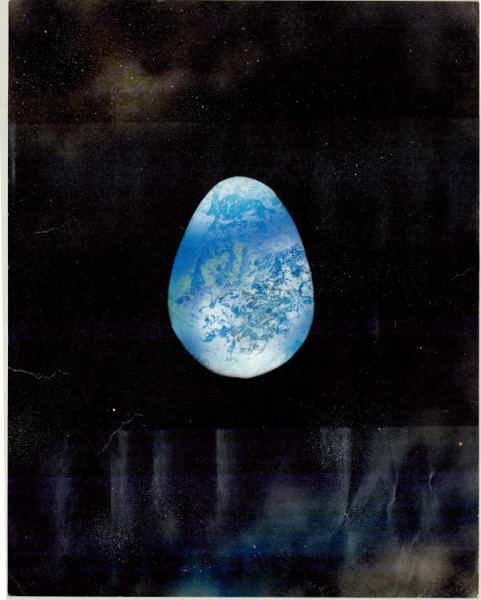Space Egg
It took most of the morning, and it cost about $25 total (bus fare, scan at FedEx in downtown Minneapolis, new usb drive that I forgot to bring from home), but I made a bad scan of my old poster that is definitely showing signs of its age.
See the photo and read my review...
The scanner added some terrible rainbow streak lines in the lower third of the image. :( Plus the damage that time has wrought to the original painting. Plus the unrounded edges in the original work. Not great stuff. Maybe it's better that I didn't rush to submit this earlier in the year for that autism charity event. This isn't suitable for much of anything.
Pictured below is a smaller file I uploaded to Dreamwidth, but the much larger version (51.3MB) is here.
I need to either 1) learn how to use GIMP to fix pictures (seems like lots of effort for little reward, 2) relearn how to make these paintings (more doable and rewarding), or 3) give up on the idea of submitting this thing to the charity event.
I learned this stuff by watching a spray paint can street artist in Austin TX, which places the event in early 1998 or prior. I don't remember what year I made this particular painting, but I'm mostly sure that I was in Minnesota when I did. I made many space scenes while I learned how to do it, all intending to culminate in this image. Once I completed this one, then I stopped painting any more since I fulfilled that effort.

no subject
no subject
1) It's mostly about layers. Apply first those features that you want "covered up" (by clouds or by dark space).
2) For the planet with multiple colors mangled together, apply wet layers of colors on top of each other. Scrunch up a ball of smooth paper like the colorized advertisements slips in newspapers, then apply the crushed paper to the wet paint. Much of the first layer comes up when you lift the paper. What's left behind is deeper layers with natural looking "random" barriers between the colors.
3) Mask over what you don't want any more stray paint to cover, like the planet when it's finished.
4) Turn the spray paint upside down, then tap the nozzle with a heavy tool. It won't properly mist the paint, so it just sputters instead, so it produces nice globs of paint as small stars.
It's easier to show than describe, and it's not really complicated. It does, however, require practice. I made lots of space scenes before I got anything that really worked for me. The only other painting that I ever recorded was this one. It was something I did for winter solstice. It's a black-and-white image, so it doesn't really convey much. It looked slightly nicer in person, but that poster is long gone, I think.